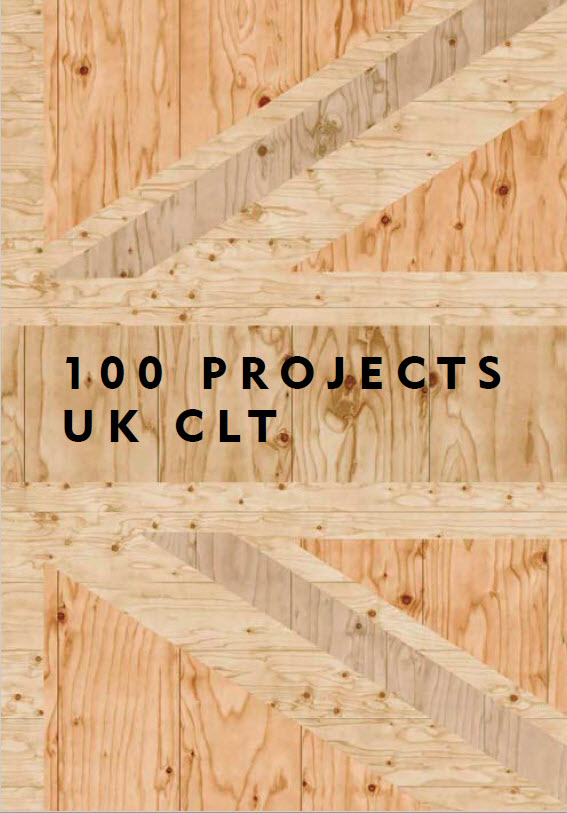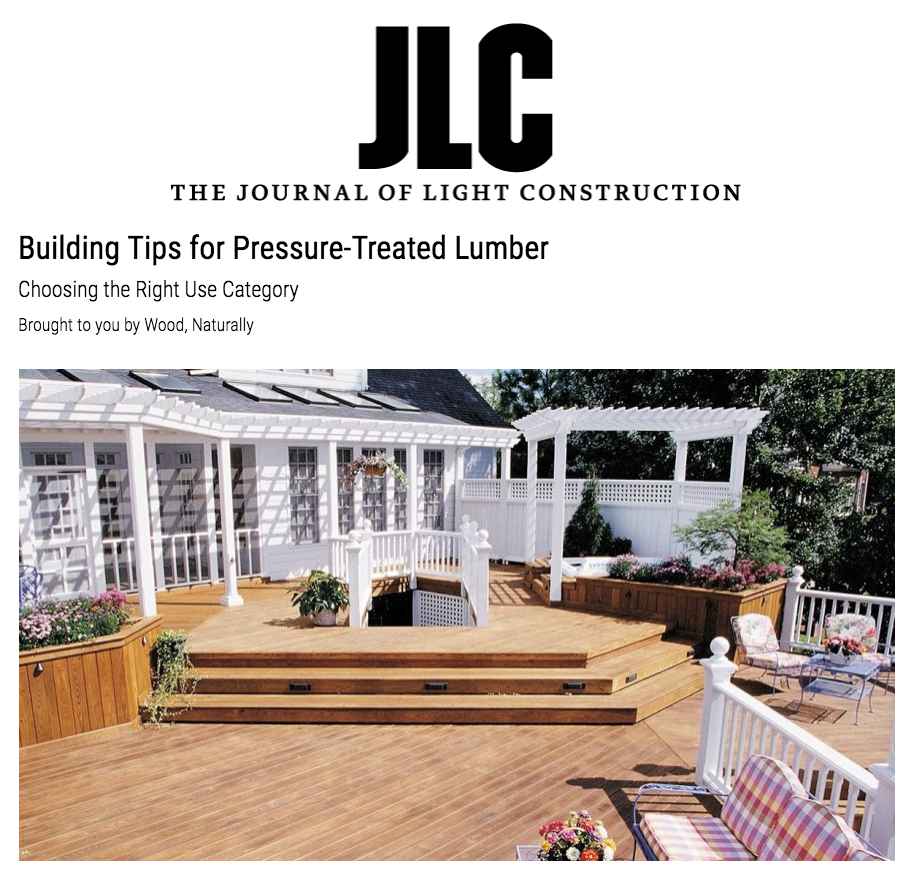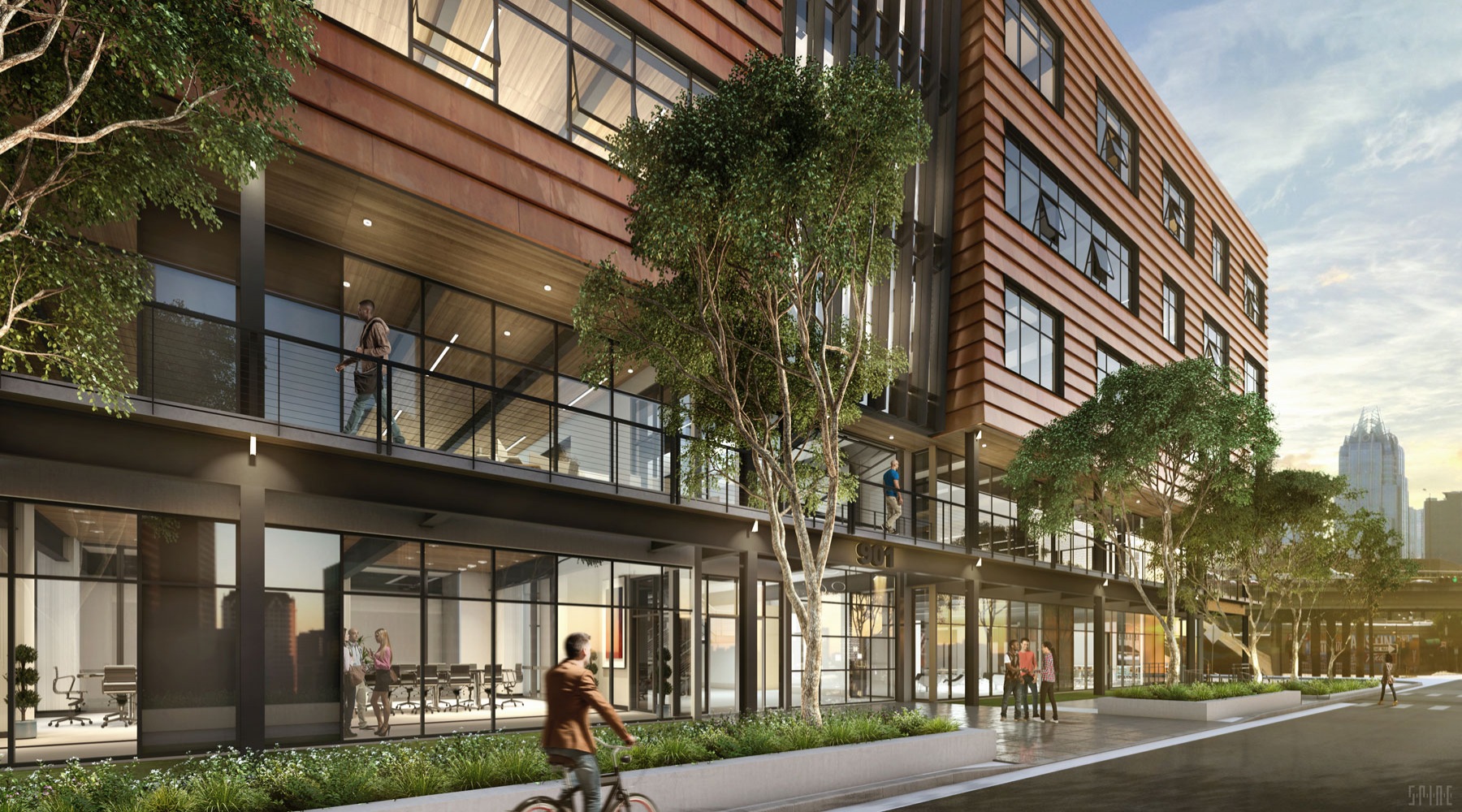HIGHLIGHTS
PROGRAM UPDATES
New Book Celebrates Impact of CLT Industrialized Wood-Based Construction Conference (IWBC) in Boston on Oct. 24-26 New Research Helps Think Wood Understand, Reach Target Audience Wood, Naturally Extends Pro-Wood Messaging Through Top Home-Improvement Sites AWC Wood Product EPDs Extended to 2019INDUSTRY NEWS
Building Code Review Software: Feasible or Far-Fetched? Austin, Texas, Project Shows Appeal of Mass Timber to Millennials Statewide Maine Forestry Coalition Announces Ambitious Plan to Grow More than 40% to $12B by 2025 Housing Enters the Machine Age, Part Two CLT Benefits Extend to Affordable Housing Markets As Mass Timber Becomes Commonplace, Learning and Resources GrowINSIGHTS ON THE COMPETITION
Concrete Campaign Continues to Smear Wood Ahead of ICC HearingsProgram Updates
New Book Celebrates Impact of CLT

The Softwood Lumber Board (SLB) and Forestry Innovation Investment (FII) partnered with Waugh Thistleton Architects to commission the recently released book 100 Projects UK CLT to showcase what is possible when building with cross laminated timber (CLT).
The book features 100 case studies of unique CLT buildings, ranging from schools and health care facilities to fitness centers and a science laboratory. All projects featured are in the United Kingdom, which has been a global pioneer of CLT construction with more than 500 projects completed to date. The book also includes a general primer on CLT construction, common technical approaches, benefits to building with mass timber, and practical lessons learned, making it an interesting and useful guide for any building professional interested in or ready to build with mass timber. To receive a digital copy of this book, please visit Thinkwood.com. A limited number of hard copies of the book are also available for SLB investors. If you would like some, please contact Pete Andrews at pandrews@softwoodlumberboard.org
Industrialized Wood-Based Construction Conference (IWBC) in Boston on Oct. 24-26
Forest Economic Advisors (FEA) is staging the Industrialized Wood-Based Construction Conference (IWBC) in Boston Oct. 24-26. The SLB-sponsored event will bring together some of the world’s leading experts in factory-built housing and the use of mass timber in design.
New Research Helps Think Wood Understand, Reach Target Audience
This summer, Think Wood completed detailed research in partnership with the American Institute of Architects (AIA) to better understand what drives architects to choose structural materials and how they source their information during the building design process.
The research revealed a number of useful new insights, including the following:
- Half of architects expect wood to be more frequently used as a structural material over the next three years.
- A majority of respondents strongly believe wood meets clients’ design expectations.
- 80% have heard and/or read about the use of wood for structural applications.
- 64% of architects will conduct research themselves before changing their opinion, with 89% starting their search about a new structural material online.
- 40% of architects would consider wood for an institutional project.
- 80% prefer to learn via continuing education courses.
The research shows that architects are avid consumers of online and print information on trends, case studies, and continuing education products. They use these to stay abreast of the latest developments in wood, such as mass timber and tall wood projects. Findings also show that architects prefer trustworthy, professional sources when it comes to learning about new building materials and trends, such as associations like the AIA and well-known print and online publications like Architect magazine. The research reinforced that long-standing perceptions about wood’s safety in fire and seismic events persist, even as new wood products and technologies have proven their code compliance in recent years.
This research and other types of data-driven insights are vital to Think Wood as it works on behalf of the industry to craft and place consistent, credible, and compelling pro-wood messaging that grows awareness and drives increased interest and desire to build with softwood lumber.
Wood, Naturally Extends Pro-Wood Messaging Through Top Home-Improvement Sites

Trusted, third-party sources can tip the decision-making scales as homeowners consider which material to use in decking. Wood, Naturally has been proactive in identifying and building mutually beneficial partnerships with numerous trusted third-party sources to promote wood as the best solution in decking and to lend credibility to pro-wood messaging. During the most recent decking season, Wood, Naturally partnered with digital media outlets Meredith (Better Homes & Gardens and Martha Stewart Living), This Old House, and Hanley Wood (JLC and Professional Deck Builder) to develop and publish content that inspires contractors and homeowners to build with wood.
Through sponsored articles, newsletter mentions, banner ads, and social media promotions, these partnerships have combined to garner over 4 million impressions to date, as well as over 1,000 engagements and clicks to Wood, Naturally’s website for more information.
AWC Wood Product EPDs Extended to 2019
An environmental product declaration (EPD) for softwood lumber is one of nine EPDs created by the American Wood Council (AWC) to have its certification extended to 2019 by Underwriters Laboratories Environment (ULE), an independent certifier of products and their sustainability.
Analogous to a nutrition label, an EPD provides information on a product’s environmental impact, energy usage, and so on, as a result of a science-based assessment of its life cycle. An EPD is an important tool that helps builders to gain points for wood use under several green-building-rating systems, including LEED and Green Globes.
All wood product EPDs, as well as AWC-originated transparency briefs that summarize EPD data, can be found on the AWC website.
Industry News
Building Code Review Software: Feasible or Far-Fetched?
Architect Magazine, Aug. 27
Automating the laborious and often-maligned process may save time and resources, but code consultants and officials may still have the upper hand over technology. At the same time, building officials are increasingly under pressure to speed up their code-compliance review process to keep up with increasingly tight construction schedules. However, many building departments are short staffed because of shrinking municipal budgets.
But what if, instead of manually reviewing drawing sets, an architect or building official could press a button and generate a code-compliance report automatically? That is the goal of several software start-ups that are leveraging the increasing amount of building data available through BIM software to automate and streamline the code-review process. Read more about San Francisco–based UpCodes and how it is approaching the plan-review challenge.
Austin, Texas, Project Shows Appeal of Mass Timber to Millennials

A new five-story office project currently under construction will become the first building in Austin, Texas, to incorporate CLT. Developed by Endeavor Real Estate Group and designed by Delineate Studio, the 901 East Sixth project features hybrid steel/timber construction and will use CLT in walls, floors, ceilings, and more. Endeavor selected CLT for both its aesthetic and structural qualities, but it is capitalizing on the desirability of wood to attract tenants and in particular millennials.
According to Endeavor’s press release: “Every generation wants to connect with the spaces they interact with, and Millennials are no different; to live and work in authentic spaces that feel undeniably their own, with a mix of old and new character. The use of Cross Laminated Timber offers a sense of warmth and authenticity of an older building mixed with state-of-the-art design and new technologies.”
Statewide Maine Forestry Coalition Announces Ambitious Plan to Grow More than 40% to $12B by 2025
FORMAINE – Forest Opportunity Roadmap/Maine – Maine’s forest industry has announced a plan to diversify the state’s wood products businesses, attract capital investments and develop greater economic prosperity for communities impacted by recent mill closures, and has announced an action plan to grow Maine’s forest economy from the current $8.5 billion (annual) to $12 billion by 2015. A roadmap outlines how the industry will achieve the 40% growth by building on traditional strengths as well as developing innovative bioproducts such as textiles, biofuels, and wood-based plastics – many of which can be made from the residuals of other wood manufacturing processes.
Housing Enters the Machine Age, Part Two
LBM Executive, Sept. 4
Today, modular holds less than 2% market share in U.S. residential construction overall. By comparison, estimates are that more than 30% of multifamily projects and roughly 20% of single-family homes are panelized.
So, if the LBM channel is about to be disrupted and displaced, odds are, it’ll be panelization that inflicts the damage. According to John McManus of Builder magazine and others, it’ll be done by companies like Menlo Park, Calif.-based Katerra; Ripon, Calif.-based Entekra; or Baltimore-based Blueprint Robotics.
Among the major players, Entekra is the one to watch. It has something no other offsite systems provider has: a track record.
CLT Benefits Extend to Affordable Housing Markets
Recent analysis by Seagate Structure Ltd. shows that mass timber, and particularly CLT, is a viable solution for creating better, more affordable housing based on mass timber’s comparative benefits related to cost, time to construct, and environmental performance. Seagate Structures is a well-known light wood and mass timber framing contractor whose projects include the 18-story UBC Brock Commons student residence in Vancouver, British Columbia, which was built using CLT and is the world’s tallest wood building. Seagate Structures is actively exploring mass timber solutions to create opportunities and new demand in the affordable housing market.
As Mass Timber Becomes Commonplace, Learning and Resources Grow
As mass timber construction becomes common, more building professionals can document and share their firsthand experiences, lessons learned, and construction best practices with others in the industry to help guide future projects. This is a welcome trend as peer-to-peer learning and knowledge transfers are proven ways to support the uptake of new technologies like mass timber.
For example, practitioners at PCL Construction Services in Colorado recently took the initiative to document and share their learning in an effort to promote more mass timber construction. PCL Construction earned its experience through multiple mass timber projects, including the eight-story Wood Innovation and Design Center office building and The Pavilion at Laurel Village, which was Colorado’s very first mass timber project using CLT panels, located on the Colorado State University campus. Writing in the Colorado Real Estate Journal, PCL Construction Services shared its firsthand learning on issues such as structural grid layout, fire rating of floor assembly, repeatable designs, prefabrication planning, humidity control, and finishing, with a keen eye toward successful planning and balancing costs.
As the mass timber market grows, hopefully so, too, does the generation and sharing of best practices.
Insights on the Competition
Concrete Campaign Continues to Smear Wood Ahead of ICC Hearings
Concrete’s “Build With Strength” campaign continues to launch daily social media attacks on wood in the lead up to the ICC hearings about the tall wood proposals in October. Recent posts have attacked wood’s carbon properties, fire safety, and CLT performance, and they have cited the wood industry’s evidence-based accounting of wood’s performance and code compliance as “reckless claims.”
Industry Resources
FEA’s Housing Dashboard
This housing dashboard is provided compliments of Forest Economic Advisors (FEA).
Virginia Tech’s Monthly Housing Report
June 2018 Reports
- Part A: July Housing Commentary
- Part B: July 2018 Economic Conditions

